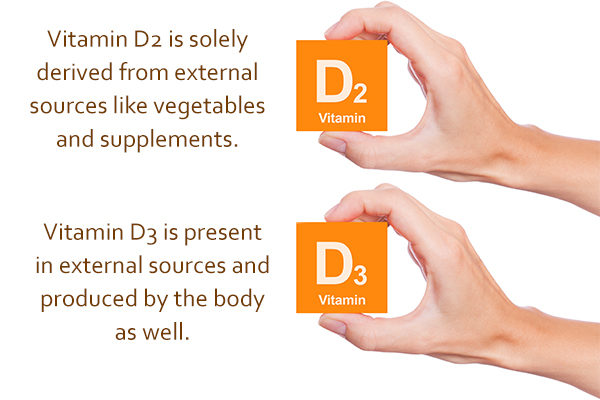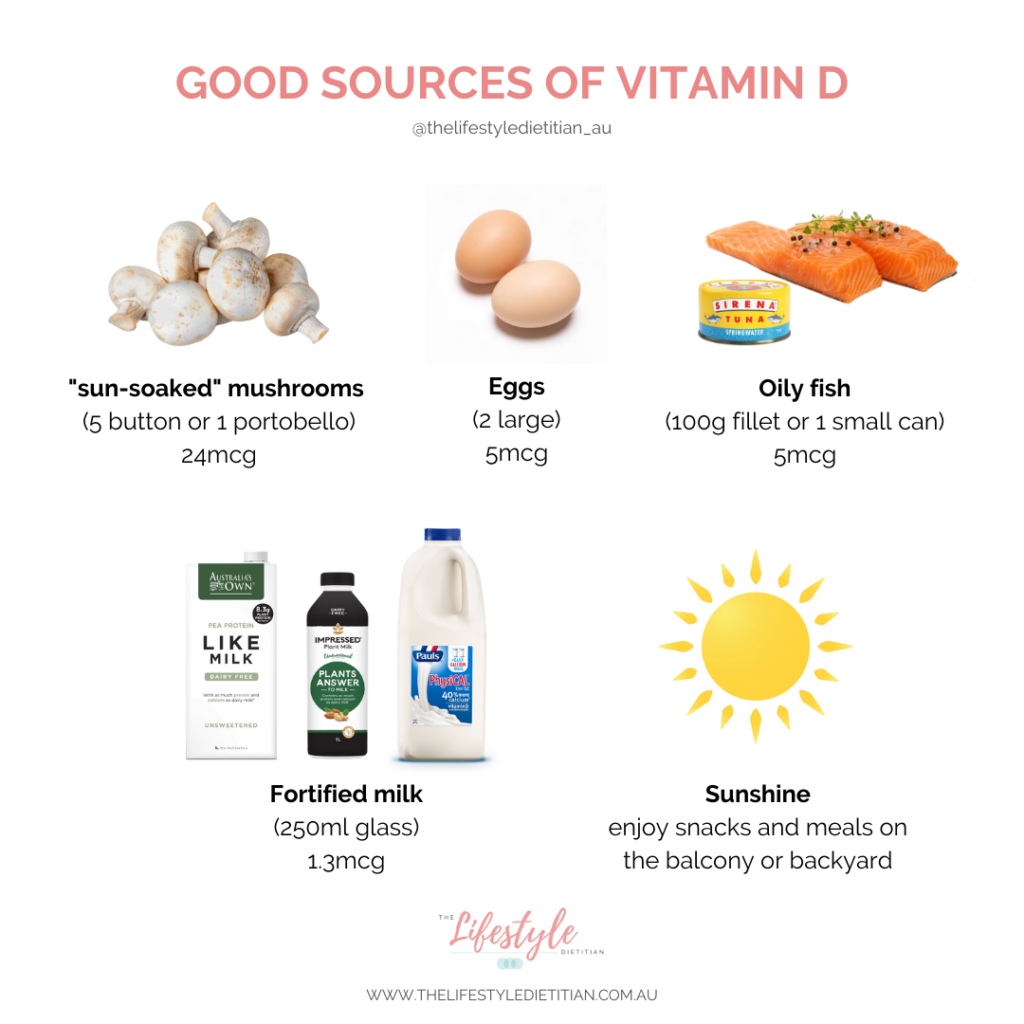Are you receiving enough of the “Sunshine Vitamin” to maintain your health and well-being as you age? This thorough essay will cover the definition, the complicated activities of the human body, the numerous forms of vitamin D, its sources, and the implications of shortage. Take a seat, and let’s continue on a journey to understanding this essential nutrient.
What is Vitamin D?
Vitamin D is sometimes referred to as the “Sunshine Vitamin,” since it is created in the skin when exposed to sunshine. It is a fat-soluble vitamin that is essential for good health and well-being. It is unusual among vitamins in that it may be produced by our bodies when we are exposed to sunshine.
Middle-aged and older people are at increased risk of vitamin D deficiency for a number of reasons. First, their skin is less efficient at producing this vitamin from sunlight as they age. Second, they are more likely to spend time indoors, especially during the winter months. Third, they are more likely to have certain medical conditions, such as obesity and kidney disease, which can affect vitamin D absorption.
Vitamin D is a group of fat-soluble secosteroids that are responsible for increasing intestinal absorption of calcium, magnesium, and phosphate. It is also involved in multiple other biological functions such as bone mineralization, muscle function, and immune system regulation.
How vitamin D works in the body?
Vitamin D, also known as calciferol, stands out from other nutrients because our bodies can create it naturally. This production occurs when sunlight interacts with a precursor derived from cholesterol. Consequently, this vitamin is not always an essential dietary requirement. When individuals receive enough sunlight exposure, they may not have to depend solely on dietary sources to meet their vitamin D needs.
Vitamin D is a type of vitamin that can dissolve in fat. When our skin absorbs it from sunlight or we get it from our diet, it undergoes a transformation in the liver to become an active form. This active form of vitamin D then heads to the kidneys, where it gets further activated.
After circulating through the body, vitamin D attaches to specific receptors in our cells. This attachment sets off various important reactions in the cells, such as promoting bone formation, supporting the immune system, and regulating cell growth and specialization.
When exposed to sunshine, the skin produces this sunshine vitamin. It is also found in fatty fish (such as salmon and tuna), egg yolks, and fortified foods (such as milk and cereal). Vitamin D undergoes two hydroxylation processes after being consumed or produced in the skin to become physiologically active.
Types of Vitamin D

There are two main forms of vitamin D: vitamin D2 (ergocalciferol) and vitamin D3 (cholecalciferol). Vitamin D3 is produced when the skin is exposed to sunlight, while vitamin D2 is found in some plants, mushrooms, and yeasts.
1. Vitamin D2 (Ergocalciferol): This type of Vitamin D is primarily obtained from plant-based sources like mushrooms, fortified foods and supplements. While it’s less potent than D3, it can still be valuable for individuals with dietary restrictions.
2. Vitamin D3 (Cholecalciferol): The body produces Vitamin D3 when the skin is exposed to UVB sunlight. It’s also found in some animal-based foods like fatty fish, egg yolks, and cod liver oil. Vitamin D3 is more effective at raising blood levels of the vitamin.
Sources of vitamin D

Vitamin D may be derived from a variety of sources, including:
Sunlight exposure
To get vitamin D from sunlight exposure, spend 10-15 minutes in the sun without sunscreen 2-3 times per week
Sunlight is the most effective source of vitamin D. It is crucial to note, however, that excessive sun exposure might raise the risk of skin cancer. As a result, when spending time in the sun, it is important to apply sunscreen and protective gear.
Diet
Sunshine Vitamin can also be obtained from a variety of foods, including:
- Fatty fish: Salmon, tuna, mackerel, and sardines are all excellent sources of vitamin D.
- Eggs: Egg yolks are a good source of vitamin D.
- Meat: Beef, pork, and chicken all contain vitamin D, but not as much as fatty fish.
- Fortified foods: Some foods, such as milk, cereal, and orange juice, are fortified with vitamin D.
Supplements
Vitamin D supplements are available in a variety of forms, including capsules, tablets, and liquid drops.
Role of Vitamin d in the Body
Vitamin D is not just another nutrient; it’s a hormone that has a profound impact on various bodily functions. Here’s how it works:
1. Vitamin D in Calcium Absorption: One of the primary roles of Vitamin D is to enhance calcium absorption in the small intestine. This is critical for maintaining strong bones and teeth, making it particularly important as we age and become more susceptible to bone density loss.
2. Vitamin D in Immune System Support: Vitamin D also plays a pivotal role in bolstering the immune system, helping the body fight off infections and diseases. Adequate Vitamin D levels are associated with a reduced risk of respiratory infections, autoimmune diseases, and even certain cancers.
3. Vitamin D in Mood Regulation: Emerging research suggests that Vitamin D may be linked to mood regulation. Low vitamin D levels have been linked to an increased risk of sadness and seasonal affective disorder (SAD).
4. Vitamin D in Cardiovascular Health: Vitamin D might also have a positive impact on heart health. It is believed to help regulate blood pressure and reduce the risk of heart disease.
Vitamin D Deficiencies

Vitamin D deficiency is a common problem, especially among middle-aged and older people. In vitamin D deficiency, production of the protein that binds calcium in the intestinal cells slows. Thus, even when calcium in the diet is adequate, it passes through the GI tract, unabsorbed, leaving the bones undersupplied. Consequently, a vitamin D deficiency creates a calcium deficiency and increase the risk of several chronic diseases.
Symptoms of vitamin D deficiency
- Fatigue
- Muscle weakness
- Bone pain
- Increased risk of fractures
Causes of vitamin D deficiency
Vitamin D shortage can be caused by a number of things, including:
- Lack of sun exposure: People, who live in northern latitudes, spend most of their time indoors, or wear clothing that covers their skin is at increased risk of vitamin D deficiency.
- Dark skin: People with darker skin have more melanin, which reduces the skin’s ability to produce vitamin D.
- Certain medical conditions: Certain medical conditions, such as Crohn’s disease, cystic fibrosis, and celiac disease, can interfere with the body’s ability to absorb vitamin D.
- Medications: Some medications, such as corticosteroids and anticonvulsants, can also interfere with vitamin D absorption.
Here are some of the potential consequences:
1. Weakened Bones: Insufficient Vitamin D can lead to weakened bones and increased risk of fractures, as it impairs calcium absorption.
2. Muscle Weakness: Vitamin D deficiency can contribute to muscle weakness and pain, making it harder to stay active and mobile.
3. Increased Infection Risk: A compromised immune system due to low Vitamin D levels can result in a higher susceptibility to infections.
4. Mood Disorders: Some studies suggest a link between Vitamin D deficiency and mood disorders like depression and seasonal affective disorder.
5. Chronic Health Conditions: Emerging research is exploring the role of Vitamin D in various chronic diseases, including heart disease, diabetes, and cancer. Deficiency may increase the risk of these conditions.
A blood test can be used to determine if someone is vitamin D deficient. If you are found to be vitamin D deficient, your doctor may recommend taking a vitamin D supplement.
Vitamin D Sources

| Food | Vitamin D content (IU/serving) |
| Fatty fish (3.5 ounces) | 325-600 |
| Eggs (1 large egg) | 41 |
| Beef liver (3 ounces) | 300 |
| Fortified milk (1 cup) | 120 |
| Fortified cereal (1 cup) | 80-100 |
| Fortified orange juice (1 cup) | 100 |
Recommended daily intake of vitamin D
The recommended daily vitamin D consumption varies according to age.
| Age group | Recommended daily intake (IU) |
| Children (1-18 years) | 600 |
| Adults (19-70 years) | 600 |
| Adults (>70 years) | 800 |
Tips for getting enough vitamin D
Spend time in the sun
Conclusion
In summary, Vitamin D is an essential nutrient for individuals of all ages, but it becomes especially critical as we grow older. It supports various bodily functions, including bone health, immune system function, mood regulation, and cardiovascular health. To ensure you’re getting enough of this “Sunshine Vitamin,” consider a combination of sunlight exposure, a balanced diet rich in Vitamin D sources, and supplements if necessary.

